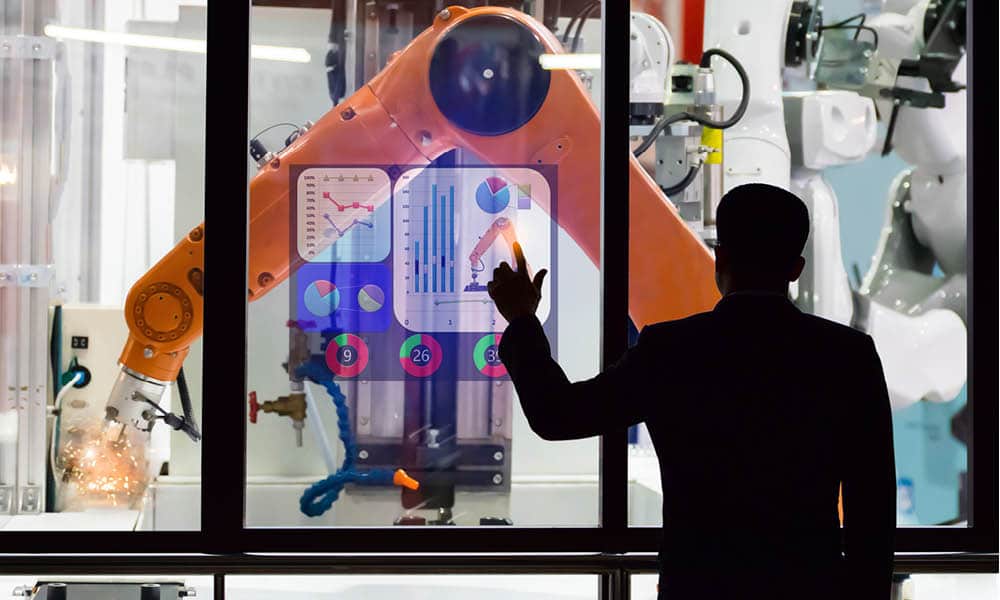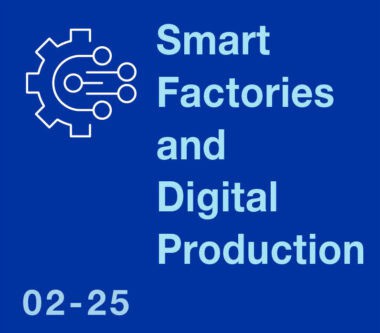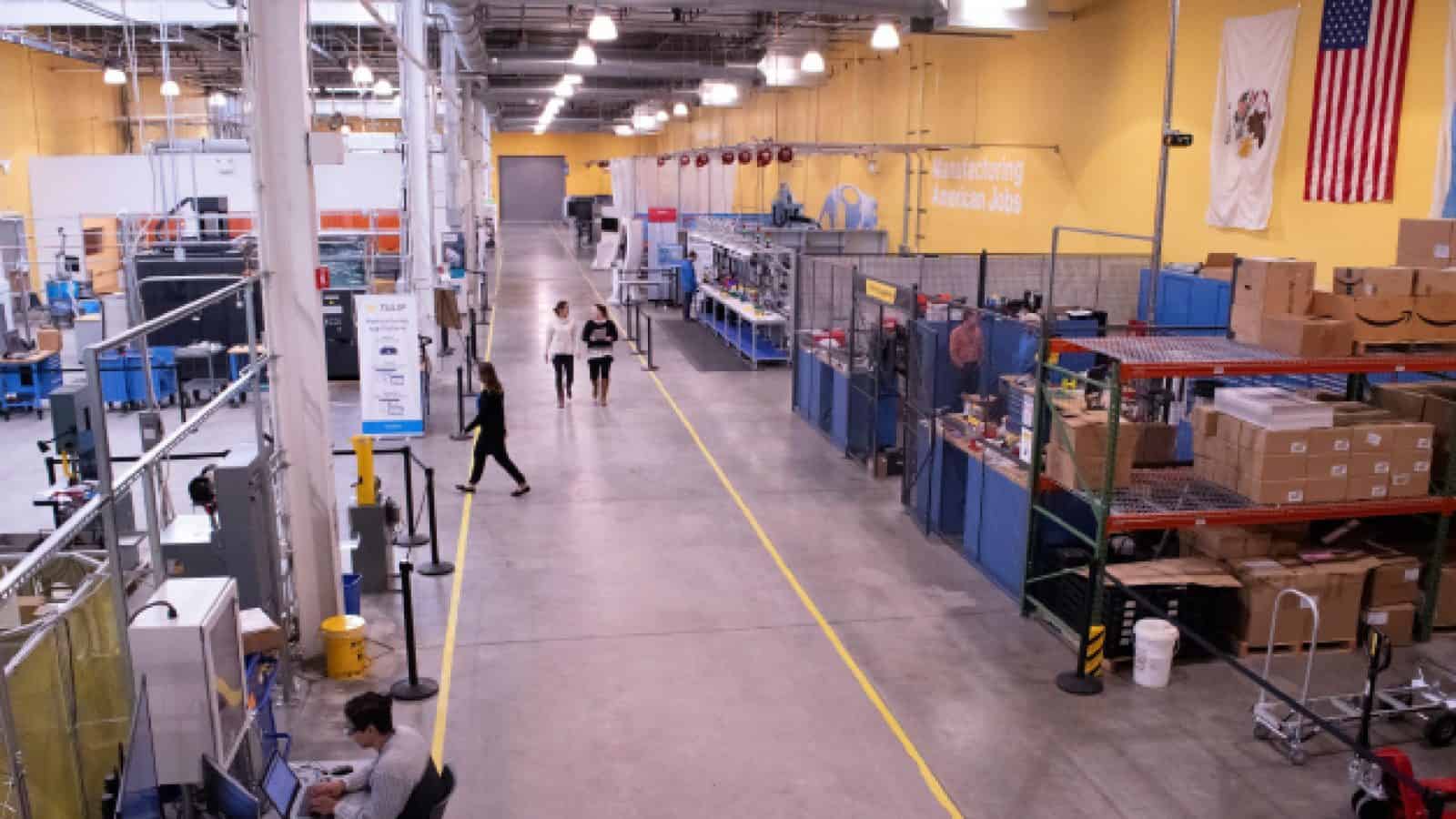AI-Driven Factories of the Future: It’s a Lot More than Just Autonomy

The future of manufacturing is about intelligently blending autonomous operations, augmented intelligence, and flexibility to redefine production.

TAKEAWAYS:
● Manufacturers can achieve greater consistency and scalability in operations by leveraging AI, robotics, and digital twins.
● Fully autonomous factories are often more obtainable for large-scale manufacturers with high-volume, low-variation production.
● Small and medium-size companies will likely derive more benefits from targeted lights-out processes, known as dim factory operations.
Imagine a factory that operates seamlessly around the clock, with artificial intelligence (AI)-powered robots building products at an efficiency and precision unmatched by human hands. Supervisors step in only for exceptions, while AI ensures optimal performance and quality. The concept of a lights out (or dark) factory is often attributed to a 1955 science fiction story, “Autofac,” by author Phillip Dick.
As manufacturers worldwide invest aggressively in artificial intelligence (AI), the idea of fully autonomous dark factories is becoming increasingly viable. These facilities promise significant improvements in throughput, quality, safety and efficiency. Yet, while the enabling technology exists, only 15% of manufacturers have transitioned to fully autonomous operations. The future of manufacturing isn’t just about going dark; it’s about intelligently blending autonomous operations, augmented intelligence, and flexibility to redefine production. Lights out or not, the ideal AI-driven factory of the future will be Scalable, Automated, Serviceable, Intuitive (Accessible), Flexible, and Interoperable.
The Quest for Competitive Advantage
Dark factories — operating 24/7 with minimal human intervention — are often heralded as the pinnacle of manufacturing efficiency. By leveraging advanced AI, robotics and digital twins, among other advanced technologies, these facilities can achieve unparalleled consistency and scalability.
The global AI in manufacturing market is valued at over $5 billion in 2024 and is growing at a 38.5% CAGR. According to the International Federation of Robots, there are now over four million operational industrial robots in operation, nearly double the number since 2016, with installations surpassing 500,000 units annually. Ninety-six percent of manufacturers intend to continue to increase AI investments over the next five years, and nearly half (49%) have fully integrated AI-driven product and/or service changes into their capital allocation process.
However, fully autonomous factories are not a one-size-fits-all solution. They require significant capital investment, robust digital infrastructure and standardized processes — factors that are often more attainable for large-scale manufacturers with high-volume, low-variation production. The stakes have never been higher for garnering return on innovation investments.
The Promise of Going Dark
Dark factories are best considered as weapons of mass production. They are most suited for larger manufacturers that have a) steady, high volume production runs, b) largely standardized production processes, c) precise specifications and quality controls, d) highly digitized assets and robust digital twins/threads, and e) a workforce that is prepared to embrace change. These larger manufacturers can also benefit from economies of scale that will improve the return on investment. Several examples are:
- FANUC, a pioneer in lights-out manufacturing, has been operating an autonomous factory in Japan since 2001. Robots are building other robots (quite a dystopian-sounding concept!) at a rate of about 50 per 24-hour shift and can run unsupervised for as long as 30 days at a time.
- Linglong Tire’s new $990 million European factory started mass production in September 2024. It integrates cutting-edge technologies such as artificial intelligence, mobile sensing, industrial big data and industrial robots to achieve full automation — from the warehousing of raw materials to the delivery of finished products, greatly improving product quality and production efficiency.
- Philips’ factory in the Netherlands uses 128 robots to produce electric razors with minimal human intervention on certain shifts. There are only nine human quality assurance workers who oversee the end of the manufacturing process.
A More Practical Path: Dim Factories
For many manufacturers, especially small to mid-sized enterprises, the dim factory model offers a more viable alternative. By automating specific processes or shifts, these manufacturers can enhance efficiency, reduce costs, and address labor shortages without the need for full autonomy. This approach balances technological ambition with operational practicality, allowing for incremental improvements tailored to unique business needs.
Small and mid-size manufacturers and contract manufacturers typically deal with lower production volumes, higher product variety and more variable production demands. For these manufacturers, dark factory operations may be less practical or desirable. These types of manufacturers, as well as many large enterprises, would likely derive more benefits from targeted lights-out processes — or dim factory operations — vs. fully autonomous production operations.
Consider that manufacturers of all sizes that have modernized, AI-led processes achieve 2.5x higher revenue growth and 2.4x greater productivity. Process modeling and automation have also unlocked efficiency gains across end-to-end supply chains — reducing energy consumption by 22%, reducing inventory by 27% and reducing waste by 55%. Gartner research estimates that 60% of manufacturers will have more than two lights-out processes in at least one of their facilities by the end of 2025. The cost/benefit of a fully automated dark factory must be weighed against the value of these targeted, AI-driven process improvements.
As manufacturers invest in AI, the idea of fully autonomous factories is becoming increasingly viable.
Industry segments will also influence the potential benefits of AI-driven factory operations. For instance, customers in some industry segments (e.g., consumer products) are demanding a greater degree of customization or personalization. A recent survey showed that over 50% of consumers prefer personalized products and are willing to pay a slightly higher price for them. Manufacturers who deal with such demands may derive benefits from employing micro-factories, a concept that was first introduced in 1990 by the Mechanical Engineer Laboratory (MEL) of Japan. These smaller, agile, and highly automated micro-factories are capable of providing high-mix, low-volume customized products with a high return on investment.
Digital twins are becoming the backbone for AI-driven factories, providing a collaborative, connected information conduit across product design, production engineering, manufacturing execution, automation, and data-driven intelligence. Applications of digital twins have moved beyond simulation and modeling to automatically effecting manufacturing operation adaptations that maximize throughput and asset utilization, adjust to production variations, and mitigate impacts of unplanned disruptions.
Converting a traditional factory to a completely dark factory is a significant and capital-intensive undertaking. Brownfield factories have the burden of technical debt, siloed data architectures and repositories, a patchwork of IT and OT systems, and an abundance of non-digitized assets, among other challenges. These manufacturing facilities can still reap the incremental benefits of business-driven process automations as cited above. Conversely, new greenfield factories can incorporate digital and AI/automation from the onset without the additional cost and complexity of legacy systems, processes, and architectures. Indeed, the preponderance of the AI-driven manufacturing lighthouses are digital natives that benefit from those advantages.
The bottom-line is that while we are seeing automation and AI being deployed increasingly across the manufacturing sector, dark factories are far from a panacea. AI investments should always be aligned with business drivers and outcomes, not just technological feasibility or FOMO (fear-of-missing out). Business drivers for AI investments may may range from workforce and supply chain challenges, shifting consumer demands, economic and cost pressures, sustainability imperatives, necessary safety and quality improvements, and increasing global competition.
Human + AI: The Augmentation Advantage
Rather than viewing AI as a replacement for human workers, the most successful manufacturers see it as a partner. This shift toward “augmented intelligence” emphasizes collaboration, where AI enhances human decision-making and performance efficiency.
The manufacturing automation wave that was prolific at the turn of the century largely consisted of automating manual processes and workflows, resulting in a reduction of about 2.5 million jobs, according to Human + Machine: Reimagining Work in the Age of AI. We are now in an era of augmented intelligence, where automation and AI are working in concert with people to improve overall performance and output. Instead of replacing jobs, new jobs are being created in areas such as AI, data science, robotics, model-based systems engineering and related functions. Manufacturers investing in upskilling and reskilling their workforce are not just future-proofing operations but establishing a catalyst for innovation.
Major Challenges and Opportunities
Achieving the transformative promise of AI-driven manufacturing is not without its challenges. Manufacturers consistently identify five critical barriers: data quality and integration, cybersecurity threats, technical debt, workforce preparedness, and ecosystem complexity. These hurdles underscore the complexity of transitioning to AI-powered operations.
- Enterprise data management
AI thrives on high-quality, well-integrated data, but for many manufacturers, this condition remains elusive. AI applications are most often hampered by inadequate data quality (57%), poor data integration (54%), and weak data governance (47%). Only one in five manufacturers have production assets with data ready for use in existing AI models. The bigger the manufacturer, the greater the problem. Over half (52%) of manufacturers view a unified IT/OT data platform as essential for enabling industrial DataOps. Achieving this requires investments in modernizing data infrastructure, breaking down silos, and adopting scalable solutions. - Cybersecurity risks
Manufacturing is now the most targeted industry for cyber attacks, with operational technology (OT) bearing the brunt. Cyber-attacks have increased by 75% over the past five years. The manufacturing industry was the most targeted industry in 2023, and over 70% of cyber-attacks were OT related according to Zscaler Research. Ransomware costs are forecast to reach $265 billion by 2031, up from $20 billion in 2021. Recognizing these risks, 75% of manufacturers have made cybersecurity a top priority, and 70% of CEOs plan to increase investments in data, technology, and cyber defenses. Proactive strategies such as robust OT/IT integration and real-time monitoring are essential for safeguarding AI-driven operations.
“Dark factories are best considered as weapons of mass production.”
- Technical debt
Outdated systems and fragmented processes create technical debt that stifles innovation. Technical debt would require over $1.5 trillion to fix — and costs the U.S. $2.41 trillion a year in cybersecurity and operational failures, failed development projects, and maintenance of outdated systems. This technical debt also constrains interoperability of systems between engineering and design and the factory and between OT and IT. - Workforce preparedness
The human element remains both a challenge and an opportunity for scaling AI in factories. Hiring and training (upskilling and reskilling) remain among the top constraints to scaling AI in engineering, design, and factory operations. Seventy percent of executives are focused on reskilling/upskilling (vs. hiring) compared to 41% in 2020. In the future, every worker will become a knowledge worker and data literacy will be a foundational requirement. Knowing how to perform a process doesn’t mean a person understands the process or the potential enabling or constraining factors. Decision-making will be augmented by AI-powered insights, and employees at all levels will need to become more comfortable understanding and acting on data. To prepare for this future, manufacturers must embed continuous learning into their culture, equipping employees to collaborate effectively with AI systems. - Ecosystem partnerships
Although 69% of businesses are engaging actively in collaborative ecosystems, a large proportion (60%) believe that multisided partnerships are difficult to execute in practice. Poor strategic alignment with partners is the leading inhibitor of ecosystem strategies, along with other factors such as limited awareness of collaboration opportunities, a resistance to share data, and limited vendor understanding of business objectives. Speed and security are the top criteria when considering potential ecosystem partners, further echoing the need to efficiently scale solutions while addressing critical data governance and security requirements. Seventy-one percent of manufacturing CEOs who have high-performing partner ecosystems affirm that those ecosystems are providing greater growth opportunities than traditional M&A.
An AI Readiness Checklist
The journey to AI-driven manufacturing is complex, but with the right strategies, manufacturers can unlock unprecedented levels of efficiency, innovation, and resilience. Before embarking on the journey toward AI-driven manufacturing or dark factory operations, assess your organization’s readiness in these critical areas:
- Operational readiness: Are your processes standardized enough to benefit from automation? How diverse is your product portfolio? Have you effectively incorporated lean manufacturing principles? How scalable are your current operations? Where are your major bottlenecks?
- Technological readiness: Do you have digitized assets, robust data platforms, and integrated IT/OT systems? To what extent are you employing digital twins/threads (e.g., for products, factory, production, and performance)? How much technical debt is embedded in your current operations? To what extent are you using cloud/edge computing? What are your current AI/ML use cases and what are the impediments to scaling?
- Workforce and organizational readiness: Is your team equipped with the skills and cultural mindset needed to work alongside AI? Have you adopted a continuous learning mindset? How robust are your training, development and change enablement capabilities? Do you have leadership buy-in, commitment, and alignment with long-term strategy?
- Financial readiness: Have you accounted for initial capital investment, R&D, and recurring costs? What are your expectations for ROI and the payback period? Have you established KPIs to measure expected performance improvements? What is your risk tolerance? Are there government and/or tax incentives that can be leveraged to offset some costs?
- Security readiness: What is the extent of your network security and segmentation? How are you protecting your IT and OT systems against dynamic and increasing cyber threats? How robust is your data encryption? How are you addressing the vulnerability of the human factor? How are you addressing potential vulnerabilities across your supply chain? What training have you implemented for management and threat detection and deterrence?
- Data readiness: Do you have access to reliable, well-integrated data to support AI applications? Do you have someone who is clearly responsible and accountable for data management and governance? How mature are your enterprise data management processes? Have you accounted for the potential impacts (e.g., compliance, cost, risk) of evolving global policies and regulations regarding AI, data privacy and protection, and data residency?
- Enterprise readiness (e.g., Suppliers, Partners): How are you managing integration of third-party systems and data? How robust are your suppliers’ capabilities and what are the major risks? How effective are your ecosystem partnerships and relationships with software and technology providers? What is your strategy for in-sourcing/outsourcing aspects of your operations?
Closing Reflections
The factories of the future won’t just be automated; they’ll be adaptive, intelligent and collaborative. Future manufacturing operations will range from dark factories to dim factories to micro-factories, and employ digital twins and digital commercial manufacturing exchanges that will enable secure, agile, on-demand manufacturing production.
When determining how to best improve or transform your manufacturing operations, avoid a binary view that only considers function allocation between humans and machines (automation); also consider augmented intelligence and performance benefits from human + AI collaboration. Regardless of the level of automation and AI, it is imperative to keep humans in-the-loop as they will ultimately be held accountable for outcomes of actions and decisions.
For small and medium-size manufacturers, the dim factory model offers a viable alternative.
While AI has had periods of disillusionment (i.e., AI winters) due to over-hyped expectations and technical limitations, the conditions are quite different this time. Today, our world is significantly more digitized, sensorized, connected, and software-driven. Instead of a lack of real-time data, we now are challenged with deriving decision intelligence from a tsunami of data. The next generation of workers are digital natives who embrace, rather than fear, technology innovation. Accelerating technological advances in areas such as computing power and speed, cloud/edge computing, computer vision, generative AI, digital twins/threads will make AI-driven factories — including dark factories — more viable over the next five+ years.
The future is here; it’s just unevenly distributed. AI is already delivering value for many manufacturers, ranging from predictive maintenance to supply chain optimization to quality control. AI-driven robots, machine vision, and optimization algorithms are improving efficiency and flexibility. Addressing challenges related to cost, security, integration, data management, and workforce development will be crucial to unlock the full potential and widespread adoption of AI-driven factories.
Now is the time to take steps forward toward this vision — whether that’s injecting AI to automate specific manufacturing processes, improve human performance, or build a fully automated lights-out factory. Let’s shape the future together with confidence!
AI-driven factories of the future was the theme of the Manufacturing Leadership Council’s Future of Manufacturing Project event in December 2024. The EY organization is a member of the MLC. M
About the authors:

Brian M. Legan Principal, Ernst & Young LLP | Industrials and Energy Innovation Leader
Disclaimer: The views expressed in this article are solely those of the author and do not necessarily represent the views of Ernst & Young LLP, other members of the global EY organization or other organizations cited.
